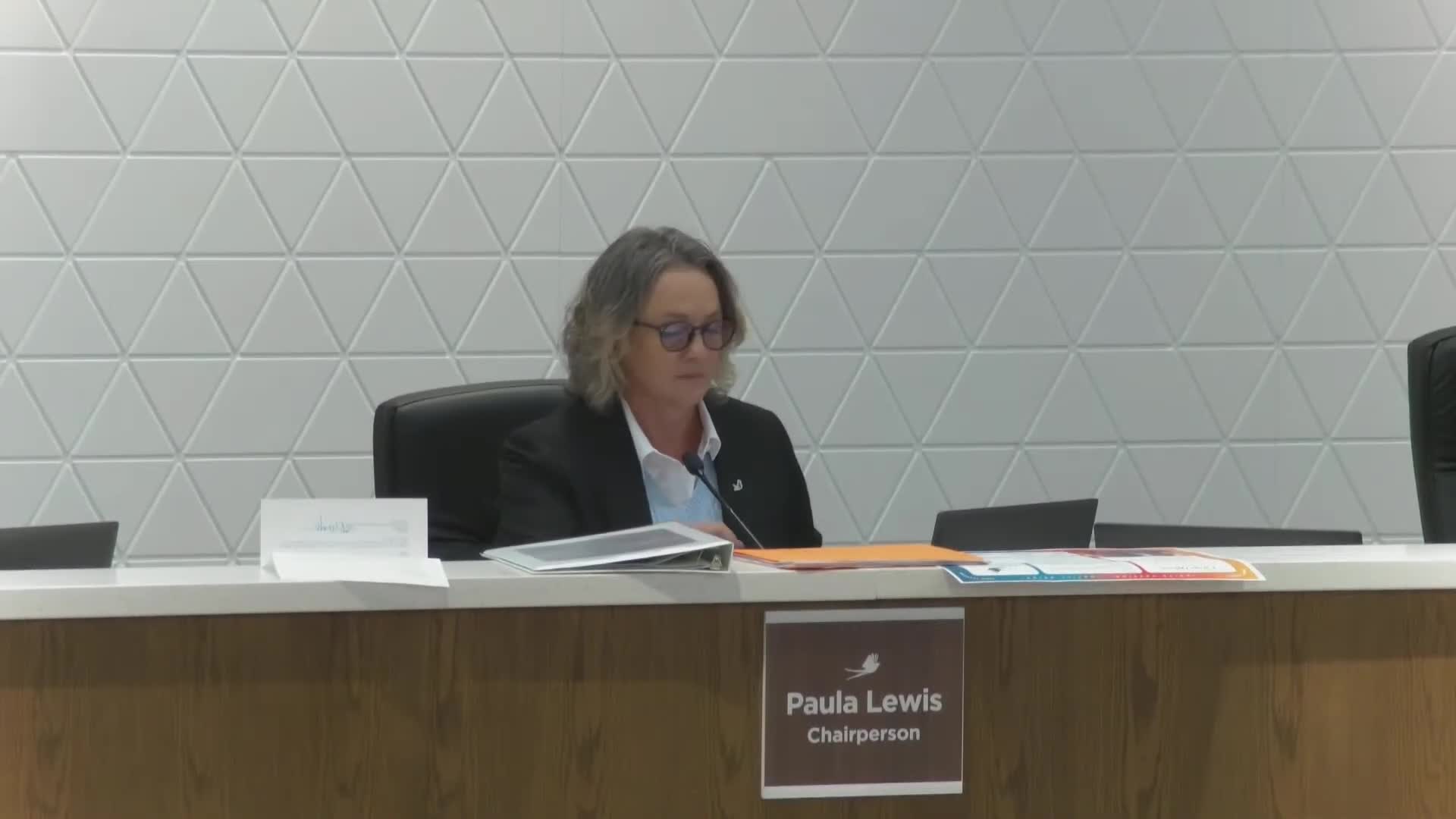OKCPS board accepts literacy monitoring report after hours of debate over LETRS training and cut scores
November 11, 2025 | OKLAHOMA CITY (Regular School District), School Districts, Oklahoma
This article was created by AI summarizing key points discussed. AI makes mistakes, so for full details and context, please refer to the video of the full meeting. Please report any errors so we can fix them. Report an error »

The Oklahoma City Public Schools board voted 8–0 Nov. 10 to accept the district’s second monitoring report, closing a multihour conversation about literacy interventions, teacher training and how changing state cut scores affect progress targets.
Superintendent J.B. Polk led the update and described work under the district’s “students outcome-focused governance” framework, including timely accounting, early identification, intervention and postsecondary opportunities. Polk and Verna Martin, senior executive director of secondary schools, detailed attendance advocates, credit-recovery pathways and expanded tutoring as part of a dropout-prevention and literacy strategy.
Board members pressed staff on LETRS, the vendor-aligned, 180-hour science-of-reading training. Polk said LETRS is a two-year program and that a practical barrier is limited statewide capacity: roughly 400 funded seats are available annually. Polk and others said trained teachers sometimes are recruited away by other districts after completing training, undercutting local returns on investment. "We have to figure out a way to stop that gap," Polk said during the discussion.
Trustees also discussed alternatives and measurement. Board members raised the district’s use of multiple indicators — attendance, DIBELS and other local measures — to triangulate performance because the Oklahoma School Testing Program cut scores recently changed. "If the cut scores continue to be messed with, we may need a district measure that is stable and digestible to the public," a trustee said.
The board asked for an off-cycle monitoring update in February to show more detailed deployment plans, projected costs, and a clearer link between identified barriers (for example, teacher recruitment/retention) and proposed strategies. The board’s acceptance of the monitoring report was procedural; the district indicated it will return with more granular, mid-year measures and proposed budget implications.
Next steps: the district will prepare the February off-cycle monitoring packet focused on adult-behavior metrics (instructional coaching cycles, principal feedback actions), LETRS enrollment/completion data, and options for scaling training or alternative high-dosage tutoring models.
Superintendent J.B. Polk led the update and described work under the district’s “students outcome-focused governance” framework, including timely accounting, early identification, intervention and postsecondary opportunities. Polk and Verna Martin, senior executive director of secondary schools, detailed attendance advocates, credit-recovery pathways and expanded tutoring as part of a dropout-prevention and literacy strategy.
Board members pressed staff on LETRS, the vendor-aligned, 180-hour science-of-reading training. Polk said LETRS is a two-year program and that a practical barrier is limited statewide capacity: roughly 400 funded seats are available annually. Polk and others said trained teachers sometimes are recruited away by other districts after completing training, undercutting local returns on investment. "We have to figure out a way to stop that gap," Polk said during the discussion.
Trustees also discussed alternatives and measurement. Board members raised the district’s use of multiple indicators — attendance, DIBELS and other local measures — to triangulate performance because the Oklahoma School Testing Program cut scores recently changed. "If the cut scores continue to be messed with, we may need a district measure that is stable and digestible to the public," a trustee said.
The board asked for an off-cycle monitoring update in February to show more detailed deployment plans, projected costs, and a clearer link between identified barriers (for example, teacher recruitment/retention) and proposed strategies. The board’s acceptance of the monitoring report was procedural; the district indicated it will return with more granular, mid-year measures and proposed budget implications.
Next steps: the district will prepare the February off-cycle monitoring packet focused on adult-behavior metrics (instructional coaching cycles, principal feedback actions), LETRS enrollment/completion data, and options for scaling training or alternative high-dosage tutoring models.
View full meeting
This article is based on a recent meeting—watch the full video and explore the complete transcript for deeper insights into the discussion.
View full meeting
